By Dan Weisz
Wishing all of you a Happy New Year!
These photos are some odds and ends from the past few weeks. Each of these subjects seems to demonstrate strength to me.
The resident Foothills Peregrine Falcon was out enjoying breakfast at Skyline and Alvernon one morning. He was dining on Mourning Dove, but do you still call that piece a drumstick??
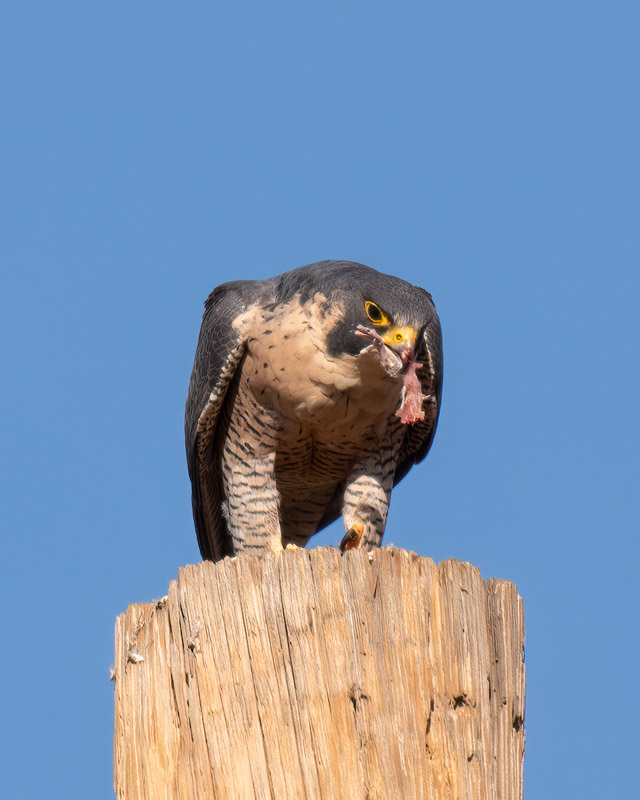
This profile shows a very engorged crop. The Peregrine is full and is holding extra food in its crop waiting for space to clear in its stomach. Notice how its long wings extend all the way to the end of its tail.
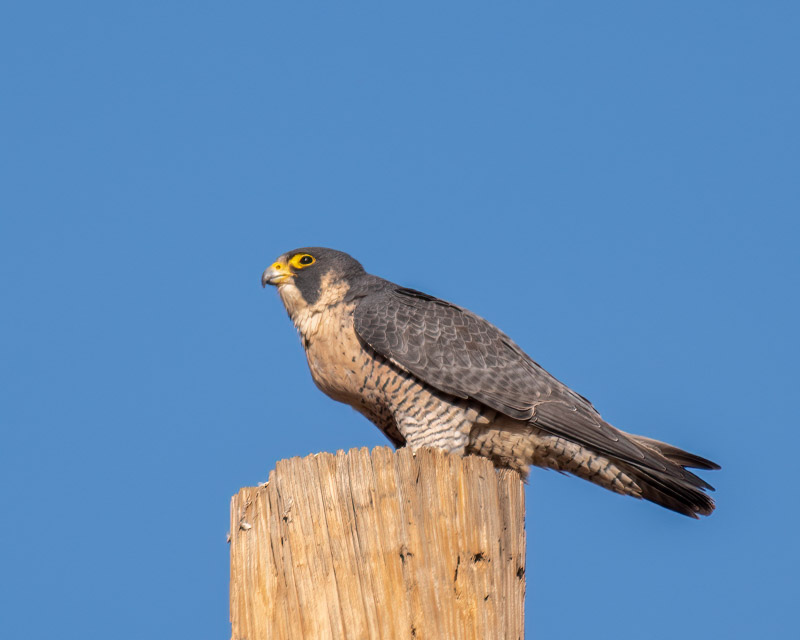
After eating and then resting for a bit, the Peregrine Falcon roused, putting all of its feathers back in place and then promptly flew off the pole right over me and beyond into the desert.
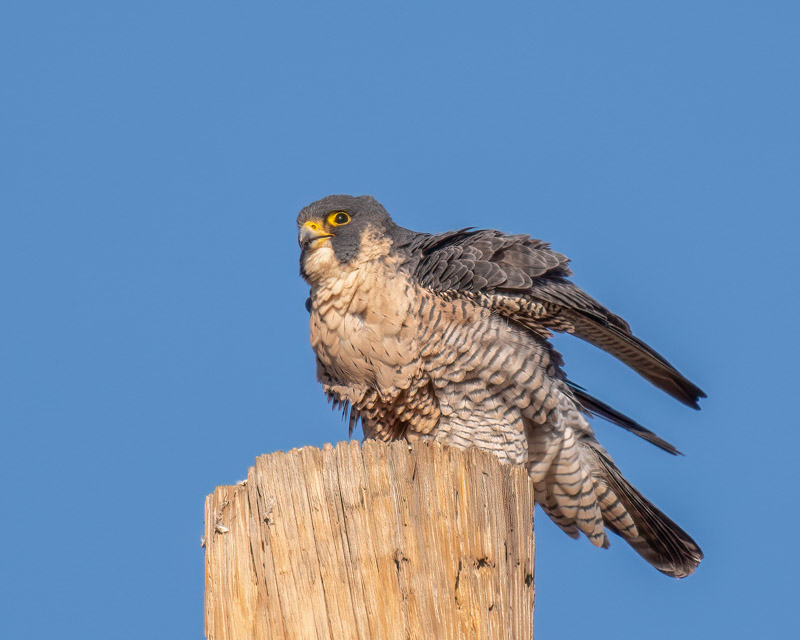
This Red-tailed Hawk was sitting on an adjacent telephone pole a few weeks earlier. I thought it was interesting to compare its profile with that of the Peregrine above. The Red-tailed Hawk rests in a much more vertical pose than the Peregrine, its wings are much shorter and its head is shaped very differently. And of course the plumage differs too. You can see many Red-tailed Hawks on telephone poles throughout the Foothills during this season.
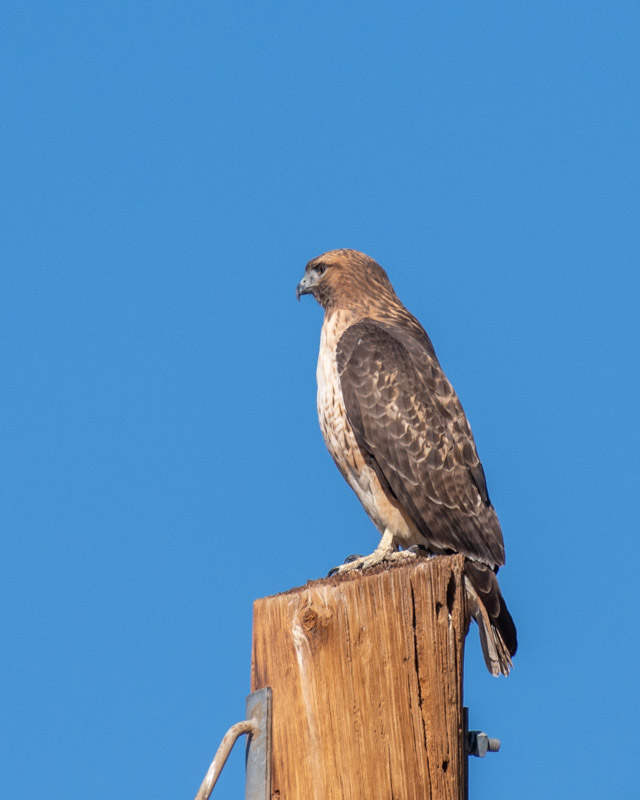
Another bird of prey was soaring low over Sweetwater Wetlands. This hunting style is typical of Northern Harriers, one of Tucson’s winter visitors. Northern Harriers are slim, long-tailed hawks.
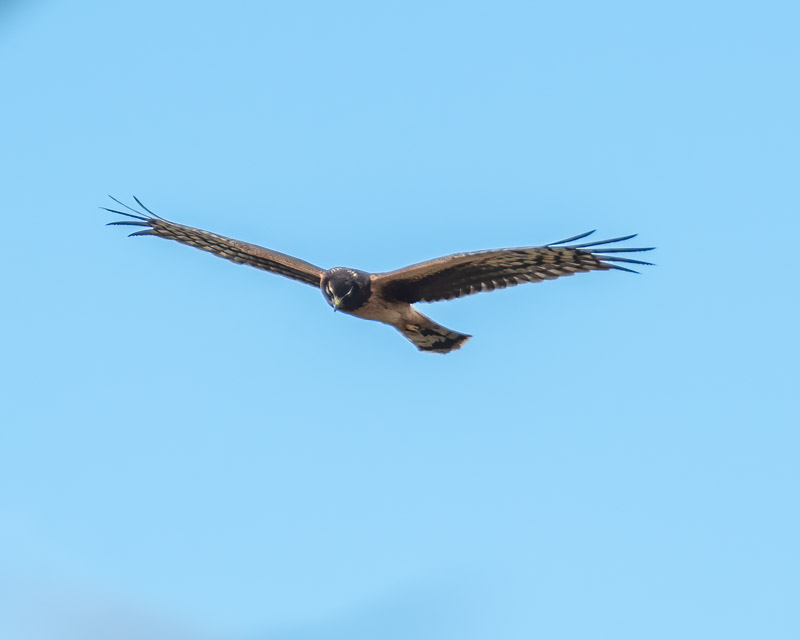
As the Northern Harrier turned, its banded tail spread. This tail, the unstreaked belly and darker head lets us know this is an immature bird. Adult females have more whitish undersides with brown streaks. Immatures have a buffy belly with less streaking
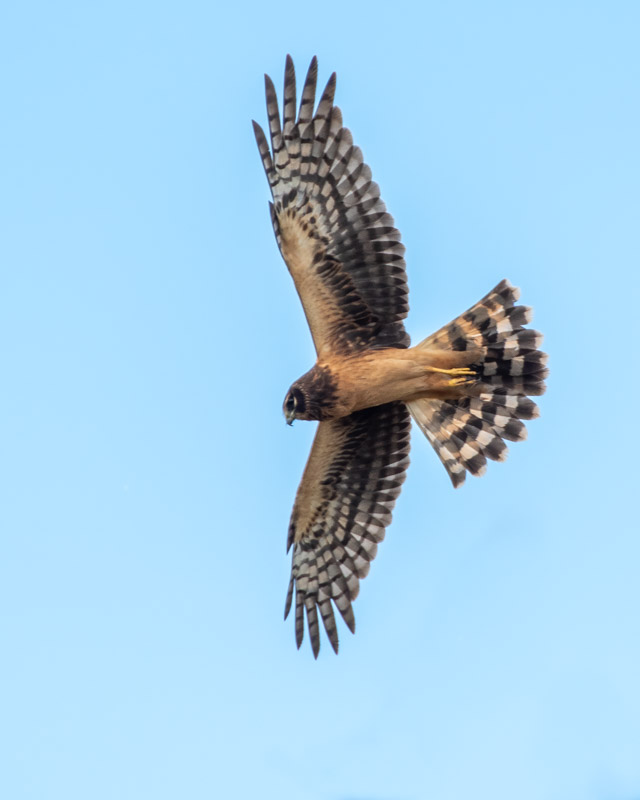
The Northern Harrier was once known as a Marsh Hawk as they typically hunted over marshes and fields. Here, at rest, it’s white rump patch shows and the very different face is apparent. The owl-like face looks and functions like an owl’s and Northern Harriers rely on hearing as well as vision to capture prey.
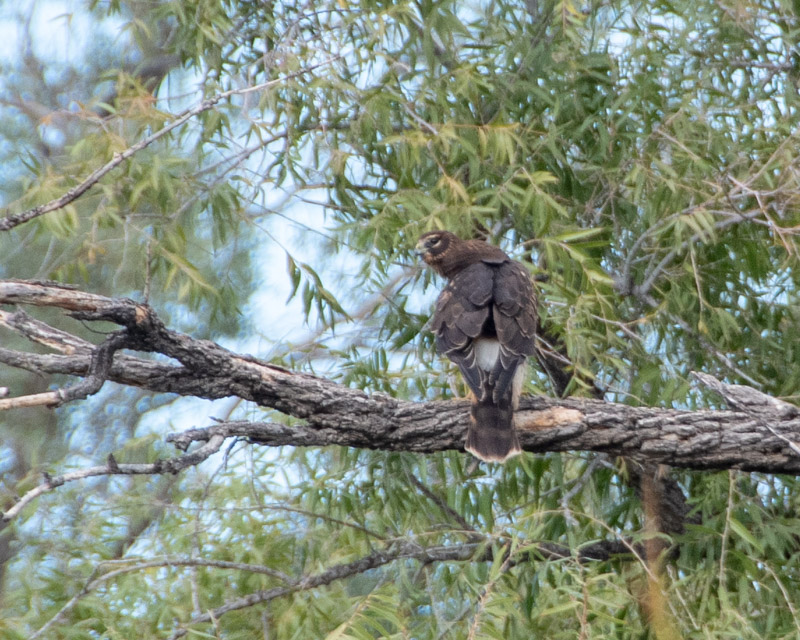
In a large palo verde tree in a desert wash, this Great Horned Owl does not appear very happy that I woke her up simply by walking by. Right now many of you may be hearing or seeing Great Horned Owls as they get ready for their breeding season all around the Foothills and Tucson.
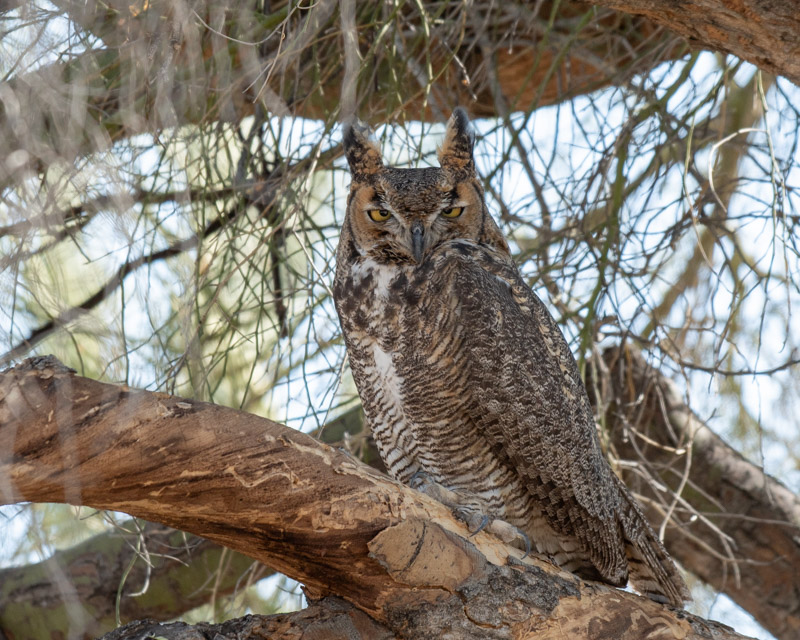
Her partner, in a palo verde tree a hundred yards away, is a bit more wide-eyed. It is interesting to see how the owls can get themselves into some very thick vegetation to roost.
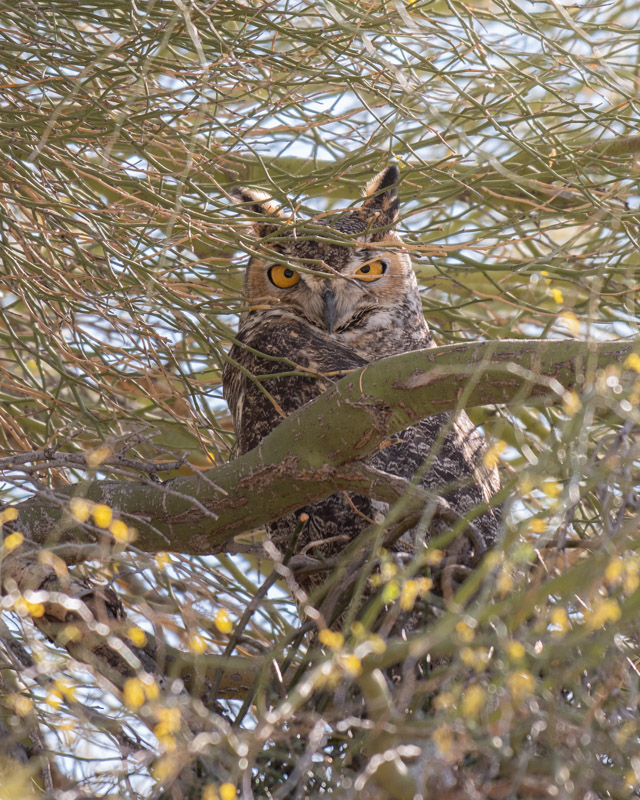
Sitting on a dried agave flower stalk, this Cooper’s Hawk had its back to the sun to warm up. The red eye and rusty barring on its chest tells us this is an adult. Cooper’s Hawks are very common throughout Tucson. If you have a grey raptor chasing the birds in your yard, you have a Cooper’s Hawk.
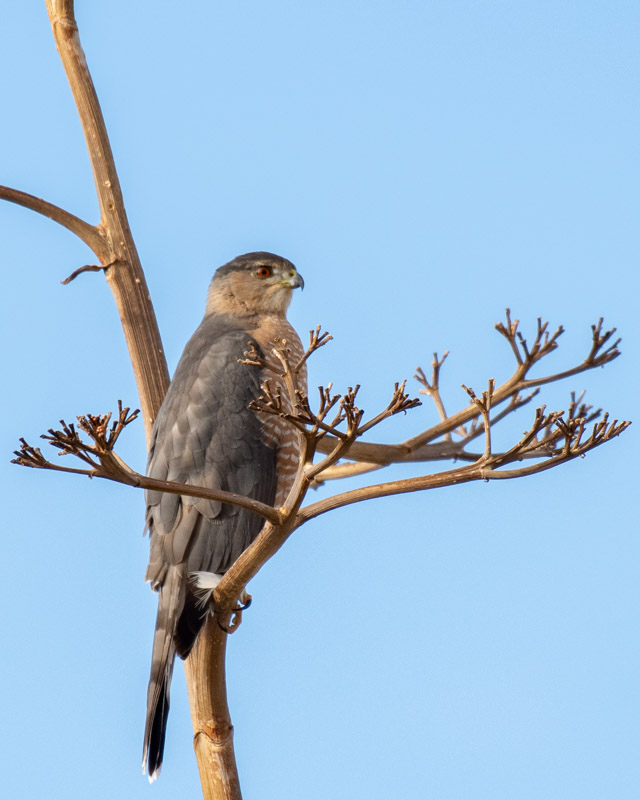
Finally, two shots of a male American Kestrel. The blue-gray wings and spotted belly reveal the gender. As I first approached the Kestrel, I took this profile photo with a large strand of mature trees far in the distance. I thought it provided a nice backdrop.
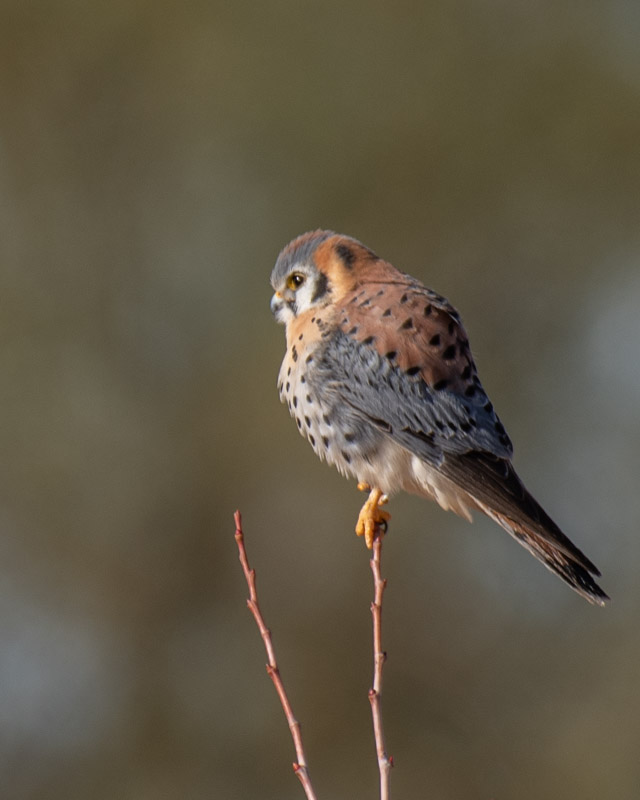
By taking one step to my left, the background changed so that there was open sky behind the bird. Same bird on the same twig perched exactly the same, but a very slight change of my position changes the look of the photo dramatically.
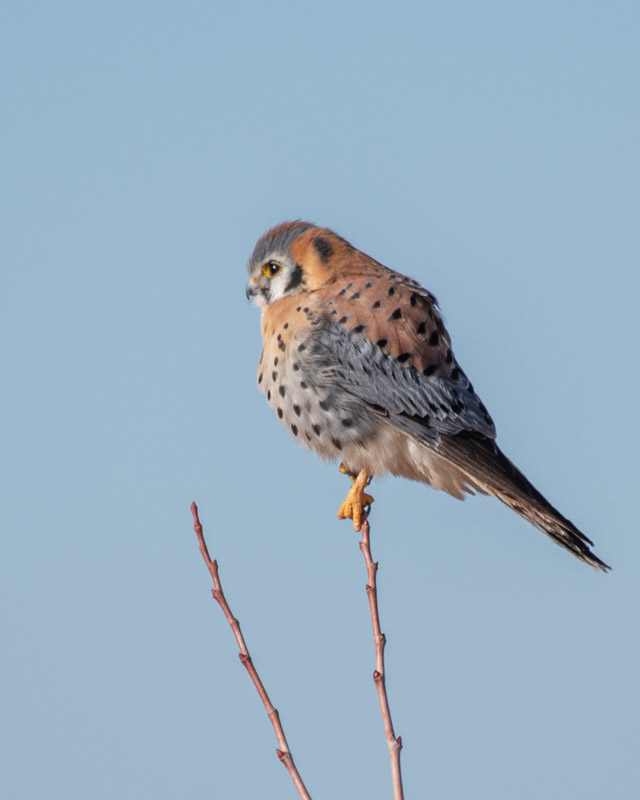
Our wintering raptors are indeed a sight worth seeing.
